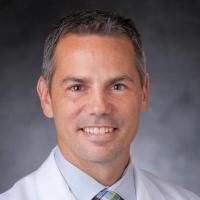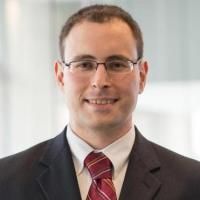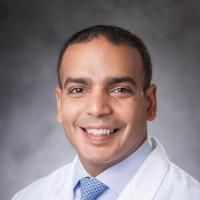Awake Spinal Fusion Is Associated with Reduced Length of Stay, Opioid Use, and Time to Ambulation Compared to General Anesthesia: A Matched Cohort Study.
Date
2023-05
Journal Title
Journal ISSN
Volume Title
Repository Usage Stats
views
downloads
Citation Stats
Attention Stats
Abstract
Objective
There is increasing interest in awake spinal fusion under spinal anesthesia (SA). Evidence supporting SA has been positive, albeit limited. The authors set out to investigate the effects of SA vs general anesthesia (GA) for spinal fusion procedures on length of stay (LOS), opioid use, time to ambulation (TTA), and procedure duration.Methods
The authors performed a retrospective review of a single surgeon's patients who underwent lumbar fusions under SA vs GA from June of 2020 to June of 2022. SA patients were compared to demographically matched GA counterparts undergoing comparable procedures. Analyzed outcomes include operative time, opioid usage in morphine milligram equivalents (MME), TTA, and LOS.Results
10 SA patients were matched to 10 GA counterparts. The cohort had a mean age of 66.77, a mean body mass index of 27.73 kg/m2, and a median American Society of Anesthesiologists Physical Status Score of 3.00. LOS was lower in SA vs GA patients (12.87 vs 50.79 hours, p=0.001). Opioid utilization was reduced in SA vs GA patients (10.76 vs 31.43 MME, p=0.006). TTA was reduced in SA vs GA patients (7.22 vs 29.87 hours, p=0.022). Procedure duration was not significantly reduced in SA patients compared to GA patients (139.3 vs 188.2 minutes, p=0.089).Conclusion
These preliminary retrospective results suggest the use of SA rather than GA for lumbar fusions is associated with reduced hospital LOS, reduced opioid utilization, and reduced TTA. Future randomized prospective studies are warranted to determine if SA usage truly leads to these beneficial outcomes.Type
Department
Description
Provenance
Subjects
Citation
Permalink
Published Version (Please cite this version)
Publication Info
Sykes, David AW, Troy Q Tabarestani, Nauman S Chaudhry, David S Salven, Christopher I Shaffrey, W Michael Bullock, Nicole R Guinn, Jeffrey Gadsden, et al. (2023). Awake Spinal Fusion Is Associated with Reduced Length of Stay, Opioid Use, and Time to Ambulation Compared to General Anesthesia: A Matched Cohort Study. World neurosurgery. p. S1878-8750(23)00613-7. 10.1016/j.wneu.2023.05.001 Retrieved from https://hdl.handle.net/10161/27922.
This is constructed from limited available data and may be imprecise. To cite this article, please review & use the official citation provided by the journal.
Collections
Scholars@Duke

Christopher Ignatius Shaffrey
I have more than 25 years of experience treating patients of all ages with spinal disorders. I have had an interest in the management of spinal disorders since starting my medical education. I performed residencies in both orthopaedic surgery and neurosurgery to gain a comprehensive understanding of the entire range of spinal disorders. My goal has been to find innovative ways to manage the range of spinal conditions, straightforward to complex. I have a focus on managing patients with complex spinal disorders. My patient evaluation and management philosophy is to provide engaged, compassionate care that focuses on providing the simplest and least aggressive treatment option for a particular condition. In many cases, non-operative treatment options exist to improve a patient’s symptoms. I have been actively engaged in clinical research to find the best ways to manage spinal disorders in order to achieve better results with fewer complications.

William Michael Bullock

Nicole Renee Guinn
Originally from Anchorage, Alaska, Dr. Guinn attended Mount Sinai School of Medicine in New York, NY, where she graduated with AOA honors. She then completed her anesthesiology residency and fellowship in cardiothoracic anesthesia at Duke University Medical Center, staying on as faculty after completing her training. Dr. Guinn served as the Medical Director of the Center for Blood Conservation at Duke University Medical Center from 2013-2022, working with patients who decline transfusion to receive safe care and improved outcomes, and developing an institutional Preoperative Anemia Clinic to diagnose and treat anemia in operative patients at risk for transfusion. She is known nationally for her expertise in management of patients “When Blood is Not an Option” and for preoperative optimization of anemia in surgical patients and is the current Chair for the ASA Committee on Patient Blood Management. Dr. Guinn is also involved with the American Board of Anesthesiology, serving as an OSCE Committee member and APPLIED examiner for board certification in the anesthesiology. She is the current Interim Division Chief of neuro-anesthesiology, otolaryngology and offsite anesthesia at Duke University.

Jeffrey Charles Gadsden
As Chief of the division of Orthopedic, Plastic and Regional Anesthesiology, my research interests lie in the efficacy of peripheral nerve blockade for acute postoperative pain control, research into educational methods for teaching regional anesthesia procedures, and the safe provision of regional anesthesia in the trauma setting.

Miles Berger
My research team focuses on 3 areas:
1) We are interested in the mechanisms of postoperative neurocognitive disorders such as delirium, and the relationship between these disorders and Alzheimer's Disease and Related Dementias (ADRD). Towards these ends, we use a combination of methods including pre and postoperative CSF and blood sampling, functional neuroimaging, EEG recordings, rigorous biochemical assays, and cognitive testing and delirium screening. In the long run, this work has the potential to help us improve long term neurocognitive outcomes for the more than 20 million Americans over age 60 who undergo anesthesia and surgery each year.
2) We are interested in the idea that altered anesthetic-induced brain EEG waveforms can serve as indicators of specific types of preclinical/prodromal neurodegenerative disease pathology, specific cognitive domain deficits, and postoperative delirium risk. We are studying this topic in the ALADDIN study, a 250 patient prospective cohort study in older surgical patients at Duke. Many people have viewed anesthesia and surgery as a "stress test" for the aging brain; we hope that this work will help us learn how to develop a real-time EEG readout of this "perioperative stress test" for the aging brain, just as ECG analysis can provide a real-time readout of cardiac treadmill stress tests.
3) We are interested in how the APOE4 allele damages brain circuitry throughout the adult lifespan, and how this contributes to increased risk of late onset Alzheimer's disease as well as worse outcomes following other acute brain disorders such as stroke and traumatic brain injury (TBI). In particular, we are investigating the hypothesis that the APOE4 allele leads to increased CNS complement activation throughout adult life, which then contributes to increased synaptic phagocytosis and long term neurocognitive decline. We are also studying whether acutely modulating APOE signaling in older surgical patients with the APOE mimetic peptide CN-105 is sufficient to block postoperative CSF neuroinflammation and complement activation.
Our work is transdisciplinary, and thus our team includes individuals with diverse scientific and clinical backgrounds, ranging from neuropsychology and neuroimaging to proteomics, flow cytometry and behavioral neuroscience in animal models. What unites us is the desire to better understand mechanisms of age-dependent brain dysfunction, both in the perioperative setting and in APOE4 carriers.

Muhammad Abd-El-Barr
As a Neurosurgeon with fellowship training in Spine Surgery, I have dedicated my professional life to treating patients with spine disorders. These include spinal stenosis, spondylolisthesis, scoliosis, herniated discs and spine tumors. I incorporate minimally-invasive spine (MIS) techniques whenever appropriate to minimize pain and length of stay, yet not compromise on achieving the goals of surgery, which is ultimately to get you back to the quality of life you once enjoyed. I was drawn to medicine and neurosurgery for the unique ability to incorporate the latest in technology and neuroscience to making patients better. I will treat you and your loved ones with the same kind of care I would want my loved ones to be treated with. In addition to my clinical practice, I will be working with Duke Bioengineers and Neurobiologists on important basic and translational questions surrounding spinal cord injuries (SCI), which we hope to bring to clinical relevance.
Unless otherwise indicated, scholarly articles published by Duke faculty members are made available here with a CC-BY-NC (Creative Commons Attribution Non-Commercial) license, as enabled by the Duke Open Access Policy. If you wish to use the materials in ways not already permitted under CC-BY-NC, please consult the copyright owner. Other materials are made available here through the author’s grant of a non-exclusive license to make their work openly accessible.
